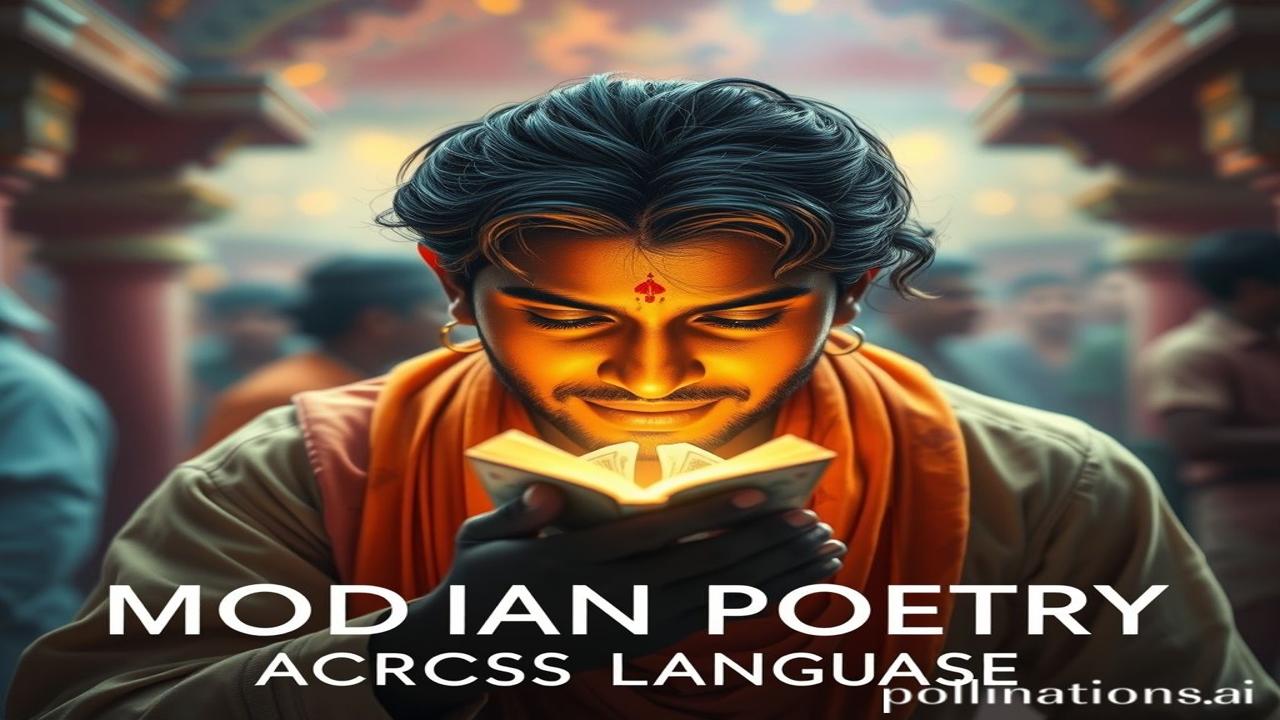Aisa Kya Tha Un Lafzon Mein…? Modern Indian Poetry Ka Safar
Kabhi socha hai, kisi purani kitab ko kholte hi, usmein chhupe hue alfaaz kaise zinda ho jaate hain? Jaise kisi ne dil se likha ho aur woh dil aaj bhi dhadak raha ho… Aaj hum chalenge aisi hi ek gali mein – modern Indian poetry ki gali, jahaan har zubaan ek alag rang leke khadi hai. Jahaan har shayar, apne waqt ki aawaz hai.
What is Modern Indian Poetry? Ek Introduction
Modern Indian poetry, basically, is poetry written in Indian languages (and English by Indian poets) after the influence of Western literary movements started seeping in. Think about it – British rule, exposure to Romanticism, Modernism, and all that jazz. This wasn’t just about copying Western styles though; it was about taking inspiration and then crafting something uniquely Indian, something that spoke to the soul of our bharat mata. This period started roughly in the late 19th century and continues to evolve even today.
Origin and Significance: From Nationalism to Existentialism
The earliest modern Indian poetry was heavily influenced by the nationalistic fervor. Think Bharatendu Harishchandra in Hindi, Subramania Bharati in Tamil. They used their poetry to awaken the masses, to ignite the spirit of freedom. As India moved towards independence and then into the complexities of a newly formed nation, poetry shifted too. Themes of social injustice, individual identity, existential angst, and the changing face of Indian society became central.
Why does it matter?
Modern Indian poetry is a mirror to our society. It reflects our struggles, our triumphs, our anxieties, and our dreams. It’s a record of our evolution, a dharohar (heritage) that we need to understand and cherish. It shows us how we’ve grappled with tradition and modernity, spirituality and materialism, individual freedom and collective responsibility.
Zameeni Sach: People and Life Through Poetry
Imagine a young poet in Bengal, late 19th century, struggling to reconcile traditional values with the new ideas flooding in from the West. He sits by the Hooghly river, the air thick with the scent of spices and the sounds of bustling markets. He writes about the pain of a widow, the inequality of the caste system, the yearning for a free India. His words are raw, honest, and powerful.
Or picture a young woman in Kerala, writing in Malayalam in the 1960s, challenging societal norms, exploring her sexuality, questioning the patriarchy. Her poems are bold, provocative, and revolutionary.
These are just glimpses, of course. But modern Indian poetry is filled with such voices. Voices of farmers, laborers, students, housewives, activists… each telling their own story, painting a vivid picture of life in India.
“Ma Rukmini ne aaj naye kapde pehne, kyunki mandir mein utsav tha, lekin uski aankhon mein ek ajeeb si udaasi thi… kya woh sirf festival ki khushi nahi mehsoos kar pa rahi thi?” This kind of emotional depth, this human-centric approach, is what makes modern Indian poetry so compelling.
Cultural Significance Today: Echoes of the Past in the Present
Today, we see the influence of modern Indian poetry everywhere. In our Bollywood songs, in our political slogans, in our social activism. The themes and concerns that poets grappled with decades ago are still relevant today. The fight for social justice, the search for identity, the struggle for gender equality – these are all ongoing battles.
Modern Indian poetry is a vital part of our Bharatiyata, our Indianness. It helps us understand who we are, where we come from, and where we’re going. It connects us to our roots while also pushing us to question and challenge the status quo.
Fun Fact or Myth-Buster: The English Connection
Log samajhte hain ki modern Indian poetry ka matlab sirf regional languages mein likhi hui kavita hai. Lekin asli sach yeh hai ki Indian poets writing in English have also made significant contributions to modern Indian poetry. Think about poets like Nissim Ezekiel, Kamala Das, A.K. Ramanujan… Their work explored Indian themes and experiences in the English language, creating a unique and powerful voice.
Visual and Sensory Layer: A Poet’s Palette
The air smells of monsoon rain and damp earth. The temple walls feel cool to the touch. The sounds of temple bells and street vendors mingle in the distance. The colors of saris and turbans swirl around you. This is the India that our poets capture in their words.
Think about a poem describing a rural landscape. You can almost feel the sun on your skin, hear the rustling of the leaves, smell the fragrance of jasmine in the air. Or a poem about urban life – the cacophony of sounds, the crush of bodies, the neon lights reflecting in the rain. Modern Indian poetry is a sensory feast.
Antim Vichar or Uddharan: A Poet’s Call
Modern Indian poetry is more than just words on a page. It’s a conversation, a dialogue between the past and the present, between the individual and the collective. It’s a call to action, a plea for empathy, a celebration of the human spirit.
“Shabdon mein hai shakti, aur shakti mein hai kalpana. Kalpana se hi badlega yeh jahaan.”
(Words have power, and power has imagination. It is through imagination that this world will change.)
